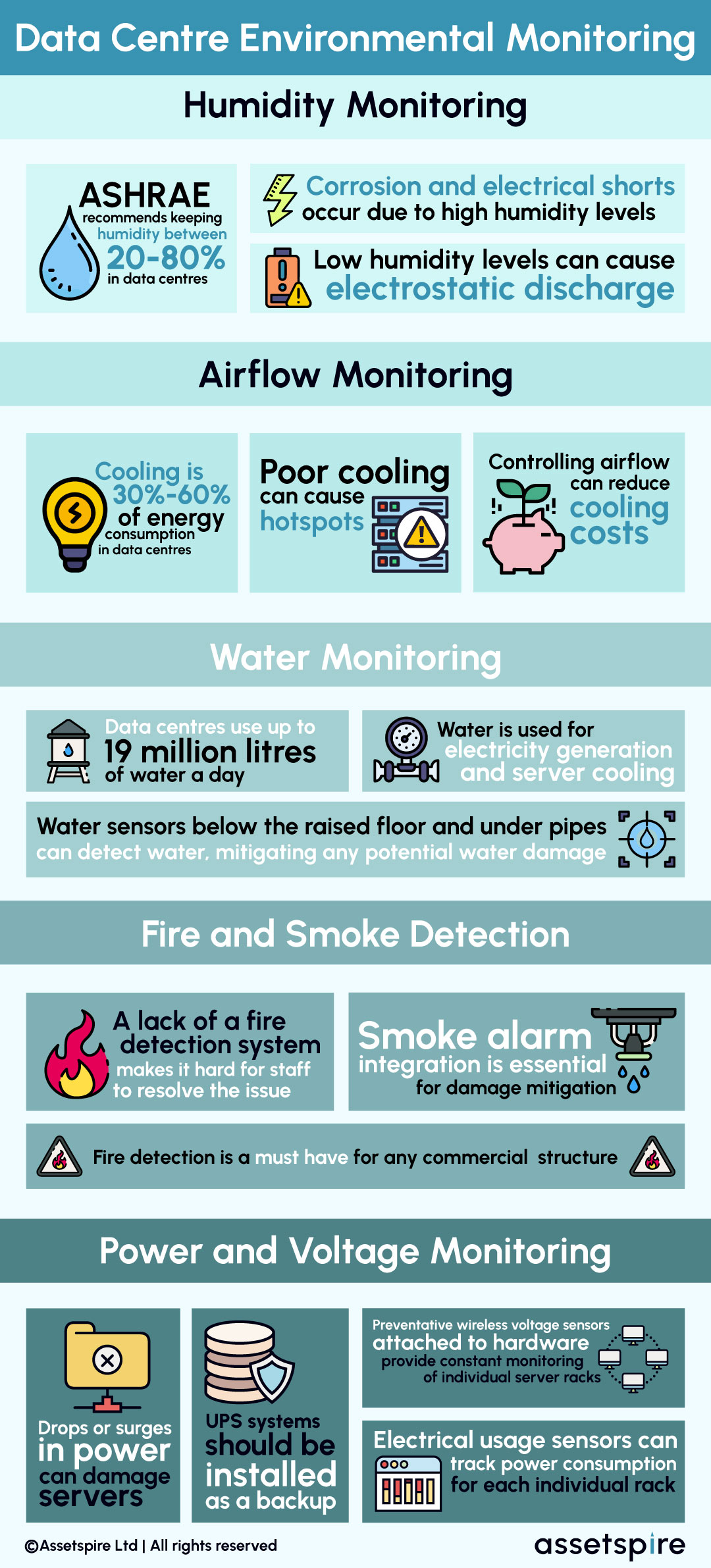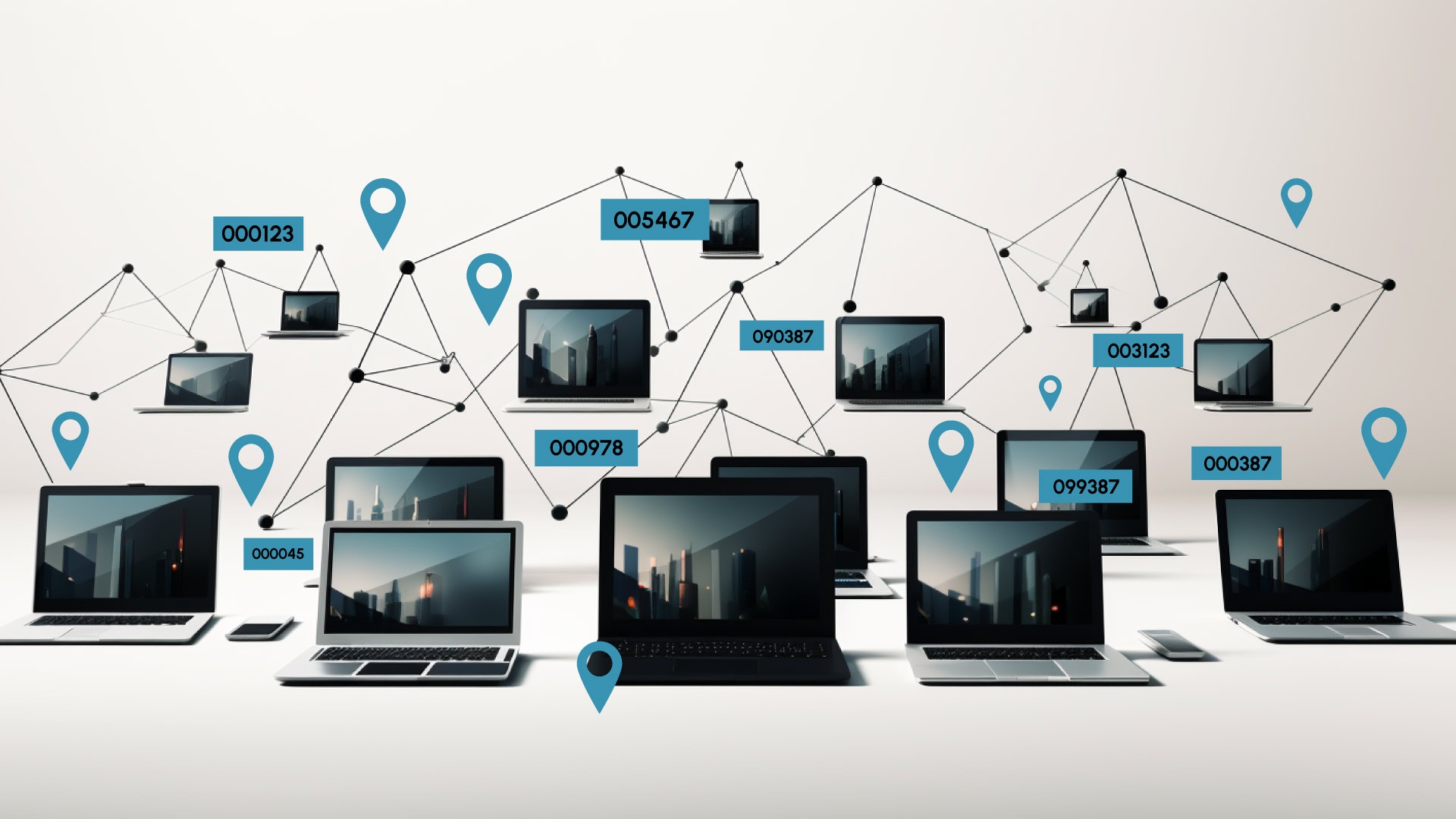The pressure is on for data centres in the modern world with soaring rates of energy consumption and carbon emissions, ringing alarm bells in the environmental world.
Quick action needs to be taken to rectify past eco damage and reduce data centres’ carbon footprint. The UN’s 2021 IPCC Report has taken the first step and advised critical and drastic measures must be taken against our effect on climate change, leading to operating bodies setting carbon neutral goals by 2030. Learn more about the environmental impact of data centres in our blog.
Working with you to reach these goals, Assetspire’s next-gen DCIM offers the smart software you need to to pinpoint the source of wasted energy and intelligent solutions to alternative energy supplies.

Table of Contents
ToggleWhat Is Data Centre Environmental Monitoring?
An integral part of data centre management is environmental monitoring, involving the continuous measurement and tracking of temperature, humidity, power, airflow and other environment-related parameters inside data centres, ensuring that conditions are at optimal levels.
Temperature Monitoring
Gauge the efficiency of cooling systems via temperature sensors throughout data centres, at the top, middle, and bottom of server racks, as well as the air conditioning intake and discharge vents. These can notify you when any temperature-related issues arise and can be dealt with before they become server failures.
Humidity Monitoring
ASHRAE recommends keeping a data centre’s RH (Relative Humidity) between 20 to 80% with an ideal of around 60%. Corrosion and electrical shorts are sometimes caused by high humidity levels, or, at the other end of the spectrum, low humidity levels can cause electrostatic discharge, resulting in damaged equipment. Avoid equipment failure, unexpected outages and costly downtime by monitoring humidity levels and keeping them at the recommended RH.
Airflow Monitoring
As we know, cooling accounts for a huge portion, between 30% and 60%, of energy consumption in data centres. Controlling airflow can help reduce overall cooling costs so it is a critical element of environmental monitoring to keep an eye on the air flow through server racks and air conditioning intake. Poor airflow can cause temperature ‘hotspots’, especially at the top of server racks. Flow sensors help measure and monitor airflow, allowing for adjustments to be made where necessary.
Water Monitoring
Many data centres use millions of gallons of water a day to both generate electricity and operate water cooling systems. As you can imagine, a leak of any magnitude can cause catastrophic damage to hardware and severe outages. Water sensors below the raised floor and under pipes can detect water, allowing for a rapid response before any damage is caused.
Fire And Smoke Detection
Standard in just about any commercial structure are fire suppression systems designed to detect smoke and extinguish fires before they spread. If a fire breaks out, it can be some time before staff can check on your assets when the fire detection system doesn’t send alerts to the team. It is absolutely essential to integrate smoke alarms into your environmental monitoring system for staff to swiftly mitigate damages.
Power And Voltage Monitoring
Drops or surges in power can cause the shut down or damage of servers.
UPS (Uninterruptible Power Supply) systems should be in place as a backup, but there is still the possibility of disruption to air condition systems which could lead to overheating.
Preventative wireless voltage sensors attached to hardware provide constant monitoring and can alert you of potential problems. Electrical usage sensors can also track power consumption by the rack, enabling replacement of obsolete servers with more efficient equipment.

What Are The Benefits Of An Environmentally Friendly Data Centre?
As we know from earlier this year, heatwaves across the globe brought some data centres to a standstill when multiple servers failed due to high temperatures. Environmental monitoring keeps data centres running smoothly and prevents any unexpected outages or irregularities that can cause damaging downtime or data loss. It’s absolutely crucial to monitor environmental factors like temperature and humidity to enable quick action if something malfunctions. Knowing the real-time conditions using DCIM can help staff take corrective measures before a small problem becomes a serious issue. Explore the benefits of next-gen DCIM software in next-gen data centres in our blog.
The added benefit of data centre environmental monitoring is that it also offers the opportunity to reduce energy wastage through efficient cooling processes. DCIM will alert operators when a threshold has been reached. A survey by Uptime Institute states that UPS failure causes 53% of power-related outages in data centres. UPS units are designed to provide emergency power in the event of a power outage. Say one of the fans cooling a UPS system stops working, causing it to likely overheat and malfunction, you’re in for some serious downtime while the problem is rectified. But this can be easily avoided with DCIM’s monitoring of every individual asset’s capacity and performance. Discover more in our blog on data centre cooling.
Whilst maintaining the highest standards of performance possible, data centres can remain compliant with industry regulations through a closely monitored data centre environment allowing for necessary adjustments to be made. In this way, you can be sure of uninterrupted uptime and data security.

Data Centre Environmental Monitoring Combined With DCIM – The Perfect Pair
We cannot stress enough the importance of data centre environmental monitoring. It is a crucial tool in the arsenal of any data centre that wants to remain reliable and safe. There may be a long way to go to reach net zero but with innovative DCIM by your side, optimising every step of the way, it can easily be achieved well ahead of 2030.
Stay ahead of the competition in an ever evolving IT landscape with a fully efficient data centre. Monitor your assets and detect any potential issues before they become problems, minimising disruptive downtime and data loss. But more importantly, data centre environmental monitoring with DCIM helps to reduce energy waste and reach those essential environmental targets.




